Spitfire AA810: 'Final push' appeal in peat bog plane's rebuild
- Published
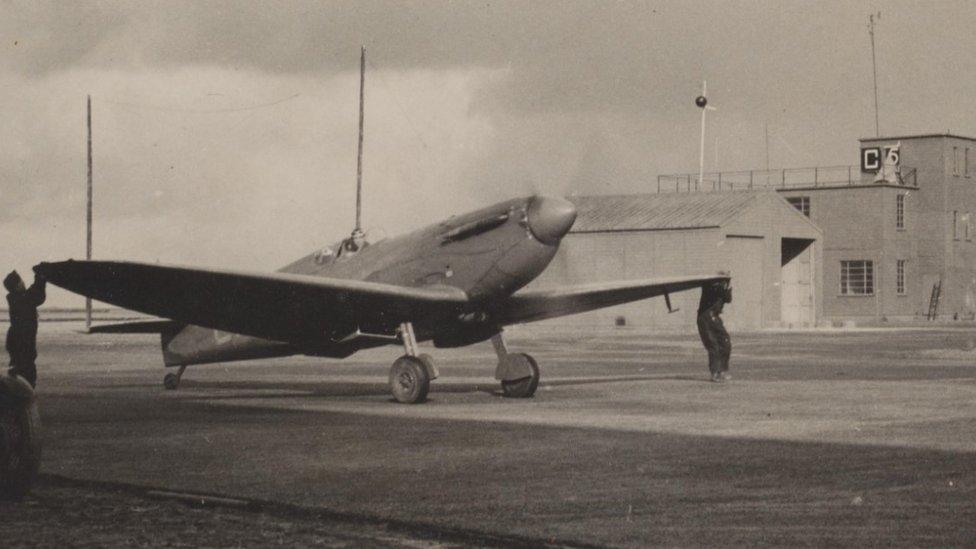
Spitfire AA810 - photographed in January 1942 - is being restored to fly in 2024
A group of volunteers restoring a Spitfire pulled from a peat bog in Norway have appealed for help as they rebuild it to fly again.
Spitfire AA810 was shot down in March 1942 during a mission to photograph German battleship Tirpitz.
Pilot Flt Lt Alastair "Sandy" Gunn bailed out but was captured, imprisoned and later executed after the Stalag Luft III "Great Escape".
It is being rebuilt on the Isle of Wight and is expected to fly in 2024.
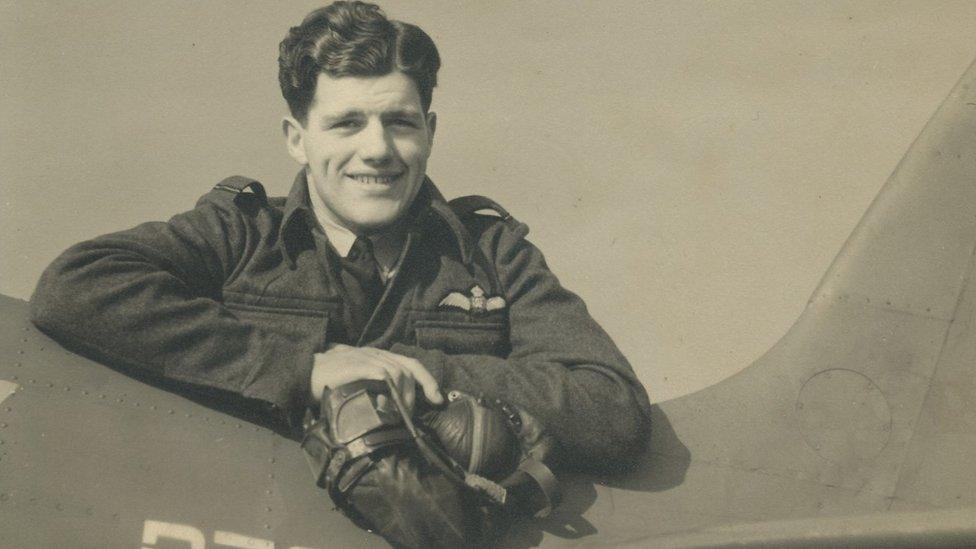
Alastair "Sandy" Gunn, seen here in November 1941, took part the famous Great Escape
The plane, an unarmed Photographic Reconnaissance Unit (PRU) Spitfire, was found by engineer and founder of the Spitfire AA810 project, external Tony Hoskins after years of research in June 2018.
He said: "This will be the earliest military unarmed reconnaissance aeroplane that will be airworthy.
"The reason we think it's really special is it's the only aeroplane relating to anybody who was in the Great Escape to survive."
The plane's remains arrived at Airframe Assemblies on the Isle of Wight in September 2019 after a small team of volunteers and local residents dug the warplane out of the peat bog by hand.
Each piece had to be carried down the mountainside to the village of Surnadal in Norway.

AA810’s main wing flaps being recovered from the Norwegian mountain
Mr Hoskins said: "We got about 70% of the aeroplane out - it had hit flat onto the ground on top of snow which year on year slowly pressed it into the bog.
"It had been reduced to 25 inches from 45 inches tall - it was a very flat, squashed Spitfire."
Some parts had been repurposed by villagers including its starter motor, which was found powering an electric fence for the cows in the village.
Parts recovered were cleaned up and laid out in the village hall and a "show and tell" held for people who had grabbed bits of the wreck over the years to bring their finds in for the team to photograph and record.
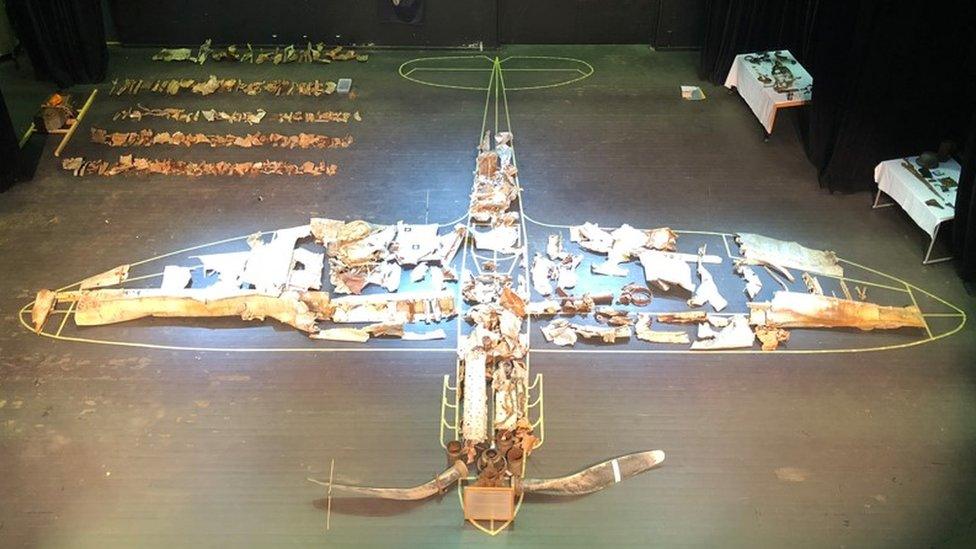
The remains of the Spitfire laid out in Surnadal town hall, Norway - the team found the plane's wreckage had nearly 200 bullet holes
Some donated their pieces to the rebuild "but others took them back again", Mr Hoskins said.
The plane which was built at Vincents Garage, Reading, and first flew from Henley-on-Thames on 17 October 1941, was then packed into a van and returned to UK after 77 years.
The parts were first taken to RAF Benson where Auchterarder-born Sandy Gunn had been based.
Months of sorting and cataloguing began and once the rights to the wreckage needed were gained the hundreds of pieces were boxed up and taken to the Isle of Wight in September 2019 to be restored to fly again.
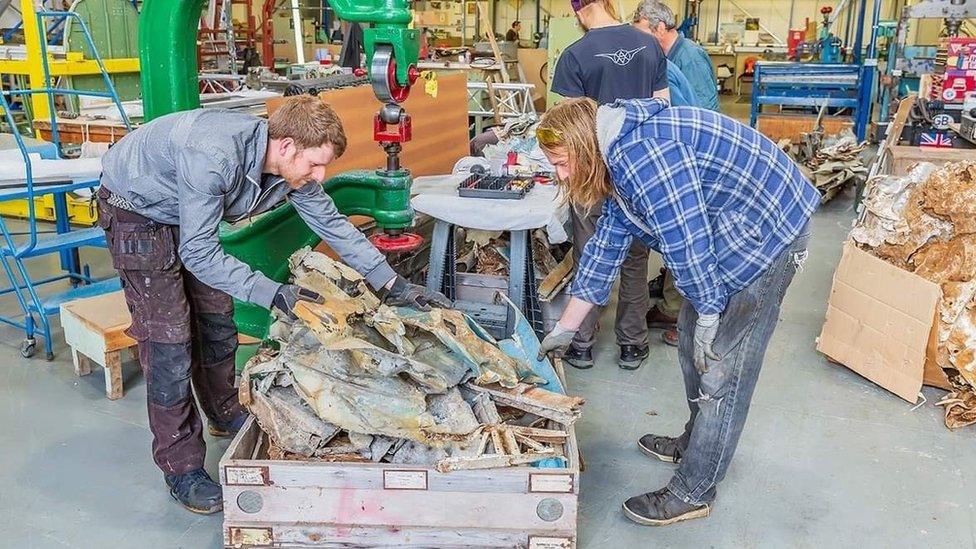
The remains of AA810 arrived at Airframe Assemblies on the Isle of Wight in September 2019 in preparation for its rebuild
Mr Hoskins said: "About 23-30% of the aeroplane is going to be original AA810 that flew on that last day in March 1942.
"I'm trying to get as many original manufactured parts from other Spitfires and the flight critical parts are brand new."
Original parts go through a rigorous period of inspection and testing before being incorporated into the plane. Any new parts are being made through reverse engineering.
It will be fitted with cameras which are planned to be fully working.

Alastair Gunn with his roommates outside Hut 122 in Stalag Luft III. (L-R) Guy Griffiths, unknown, Alastair Gunn, Wally Valenta, Des Plunkett, Hubert Henderson, Dudley Hamilton-Davis, John Boardman
"I am going all out to fly it by the end of the summer 2024. It is the anniversary year of the Great Escape, it's the year that we hope to unveil a national monument in London and its the anniversary of the murder of Sandy Gunn.
"It's a very important thing to me personally for the aeroplane to be finished and flying in 2024."
A company to operate the aeroplane has been formed including a chief pilot with the Spitfire based at a publicly accessible museum at an airfield where it can be seen and flown from.
The project is currently looking for sponsors to raise the £1.25m remaining to finish the plane "to the point of it sitting there with a full tank of fuel ready to go and fly", Mr Hoskins said.
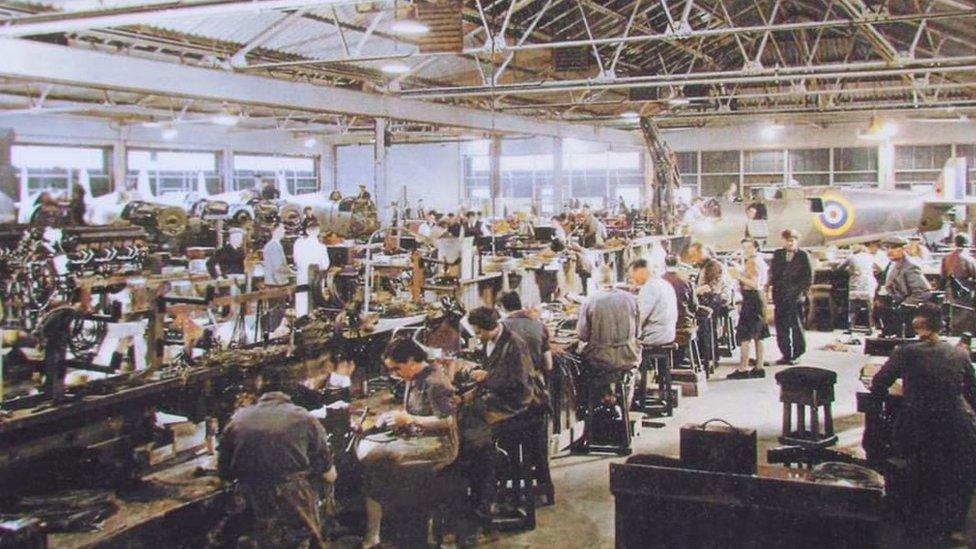
The inside of Vincents Garage in Reading with various Spitfires under construction
"We're looking for individuals or companies that want to help us with the final push to get the aeroplane up in the air by sponsoring a switch or a rudder or the overhaul of something.
"It doesn't matter how little or how much... or if people have original Spitfire parts that they would like to see be considered for inclusion in the aeroplane and be happy for us to take for inspection we'd be delighted to hear from them.
"Sandy Gunn's family have sponsored the rudder pedals...The cowlings are going to cost £50,000 so we have created 500 spaces on the inside panel if people want to have their name in the aeroplane," Mr Hoskins said.
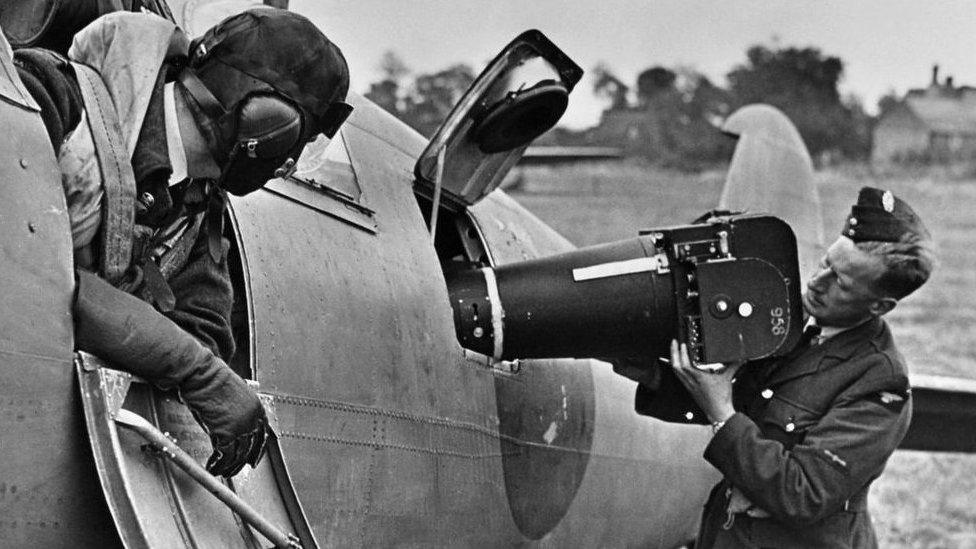
A Photo Reconnaissance Spitfire is loaded with a vertical camera prior to a mission over occupied territory
The project is also behind a campaign to build a monument in London, external and would like family members of those who served in the unarmed RAF Photographic Reconnaissance Squadrons to come forward so their names can be included.
Mr Hoskins said: "Every single name listed will be reproduced on the inside of the top cowling of AA810; every time Sandy's Spitfire flies their names will fly too."

Follow BBC South on Facebook, external, Twitter, external, or Instagram, external. Send your story ideas to south.newsonline@bbc.co.uk, external.
Related topics
- Published5 December 2021
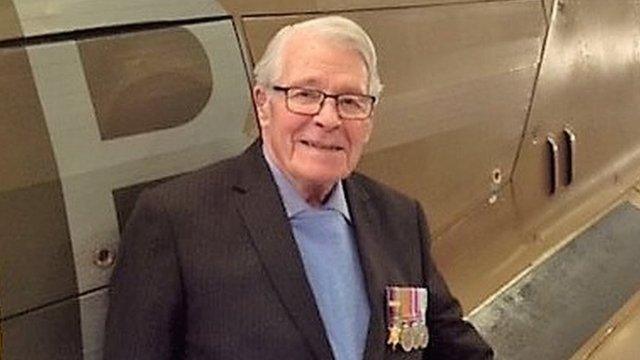
- Published17 October 2021
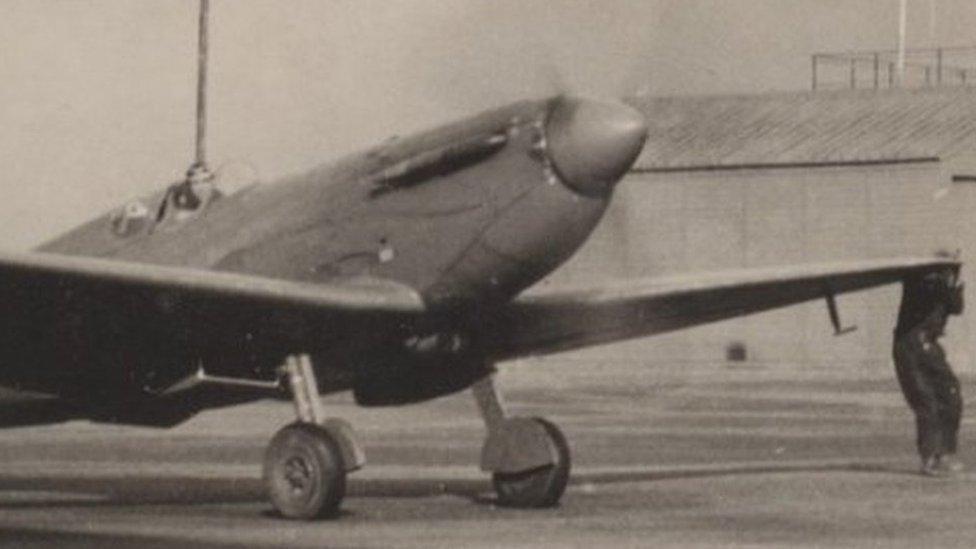
- Published11 November 2021
